Old houses often come with features rarely found in new buildings-plaster walls, stained-glass windows, handcrafted woodwork, bats in the attic. Like many folks, I don’t mind bats in theory, but I will never forget the sight of my mother, in ski mask and pajamas, trying to remove a bat from our house with a fishing net.
The last thing many homeowners want to see: A colony of bats has settled in the attic of this old house. 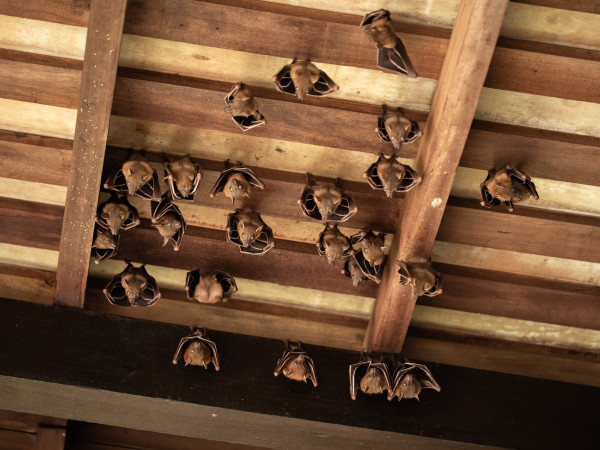
So when I found a dozen bats snoozing between the trim and a screen window of my Greek Revival house, I panicked and immediately phoned the local game commission. The licensed wildlife control specialist who responded explained that I didn’t have a bat infestation; the animals I saw were only migrating, taking shelter in my window for a couple of days on their way to someplace else.
My disgust now turned to curiosity, so I set out to discover more about bats, how homeowners can tell when they have a bat problem, and how to get rid of it when they do. What I found just might keep you and your house from going batty.
Why Old Houses Appeal to Bats
When bats become houseguests on a regular basis, it often signals an infestation that needs to be addressed.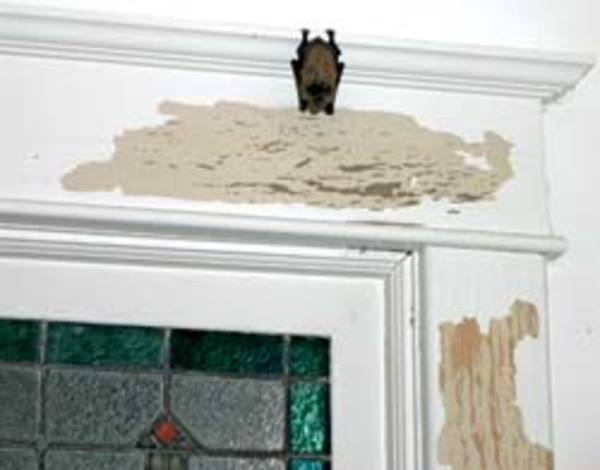
Bats are particularly attracted to old houses because they offer so many potential entry points. Chimneys, cracks or holes in the siding or soffits, louvered vents with loose screening, separating flashing, and just about any place where materials have shrunk, warped, or moved apart will invite bats to enter and make themselves at home. Bats need just a tiny crack-about 3/8 by 1-to enter a house, and can squeeze through holes the size of a quarter. That’s not much space.
In truth, bats are important to a healthy environment. They are extremely good at keeping down the bug population, with a single bat consuming about 3,000 insects a night. However, some species of bats commonly roost in buildings today due to loss of natural habitat.
According to Barbara French, a biologist with Bat Conservation International, many people have a few bats in their attic and never know it. But a large colony of bats can become a noise or odor nuisance. And bats should not be allowed to enter interior living quarters.
What Kind of Bats Do You Have?
Three species of bats are most likely to find a warm old-house attic, wall, or soffit an irresistible roost:
Big Brown Bats
Big Brown Bats are found throughout most of the US and Canada. A large colony of big brown bats may total a dozen animals.
The big brown bat is a common visitor to old house attics. Big brown bats have glossy brown fur and black wings. 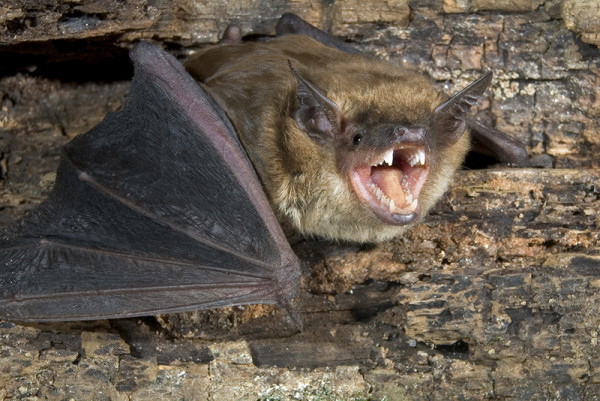
Little Brown Bats
Little brown bats are found mostly in Canada and the northern United States. A sizeable colony for little brown bats can number in the several hundred.
An adult little brown bat is usually no more than 4 inches long–about the size of your thumb. 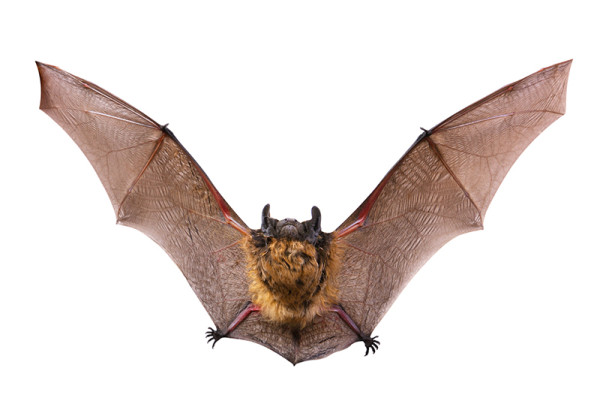
Mexican Free-tailed Bats
Mexican free-tailed bats are found in the southern, western and southwestern United States. For Mexican free-tailed bats, a colony can number in the thousands.
The Mexican free-tailed bat has a reddish-brown or gray color and large black ears that point forward. They get their name from the way their tails extend about a third beyond their tail membranes–other bats’ tails are usually completely enclosed. 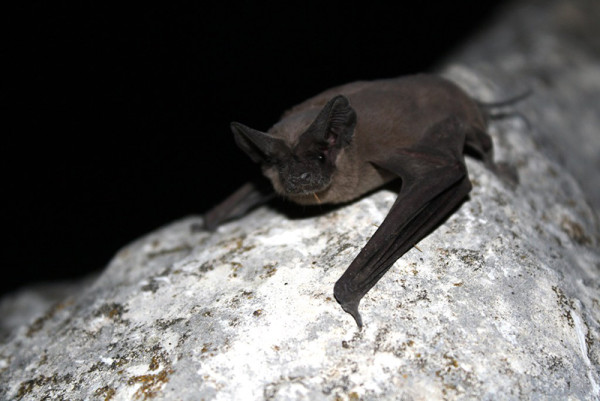
Which Bats Are Protected?
It is inhumane, usually illegal, and definitely impractical to kill a colony of bats roosting in one’s home. Eight species of bats are on the federal Endangered Species list, and each state keeps its own list as well. According to Susi Von Oettingen of the US Fish and Wildlife Service, even a bat species that’s plentiful across the entire continent can be protected in your state.
Most endangered bats are not house dwellers, but it’s extremely difficult for homeowners to tell whether they have a colony of little brown bats, endangered Indiana bats, or, since they sometimes live together, a mix of the two.
Getting Rid of Bats
However, if you decide you just can’t live with bats, first forget the advertisements for ultrasonic deterrent devices, mothballs, or aerosol sprays; they do not work long-term. Each of the five bat experts I spoke with told me that the only way to get rid of bats is to evict them from your home, a process usually called exclusion and often within the skills of a layperson as well as a professional.
What is Bat Exclusion?
Bat exclusion involves covering the openings the bats use to enter with netting or tubes. The bats can drop down and fly out, but are unable to crawl back in again.
Successful bat exclusion involves attaching netting over the entrance to where bats get in (usually a hole or crack). An opening at the bottom insures that the bats will be able to safely leave the netting, but not get back inside. Wildlife Removal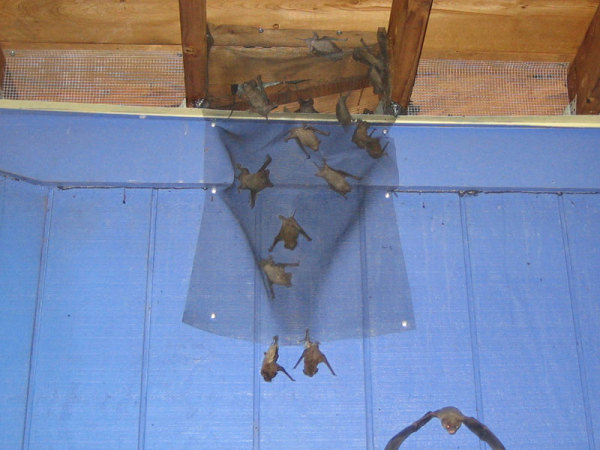
Before beginning, though, homeowners must accept that bat exclusion can be a big job, particularly if you have a fairly dilapidated home, because there are so many cracks the bats can enter. However, if your house is structurally sound, and has only one or two bat entry points, it’s a pretty simple process to do yourself, according to Barbara French.
What is the Best Time of Year to Exclude Bats?
It’s best to plan bat exclusion in late summer or early spring because come mid-May, female bats begin giving birth to pups that cannot fly for several weeks.
If you start eviction too early in the summer, you may be left with orphaned baby bats in your home, which couldn’t survive. In much of the country, house bats migrate in the fall to hibernate in mines and deep caves. If your bats have left for their winter quarters and you know where they are coming in, late fall is an excellent time to seal up the all exterior entry points and clean out the droppings.
Not all bats migrate, however, especially in the Southeast. And sometimes, they will hibernate in the house itself. You cannot evict the bats in the winter if they are still present, because they will not be able fly out while still in hibernation.
Getting Started With Bat Exclusion:
- Determine where the bats are getting in. Examine your house’s exterior in daylight, identifying any cracks or holes, then sit outside on a balmy, clear summer evening and stare at those spots, looking for bat activity.
- Be sure to watch each side of your house, since bats often have more than one entry point.
- The entry points may have somewhat greasy brown marks around them comprised of a mix of urine, feces, and body oils from the bats. Professionals often look for these bat tracks or signs to help identify entry points.
Note the brown marks on the wall behind this bat exclusion netting. Wildlife Removal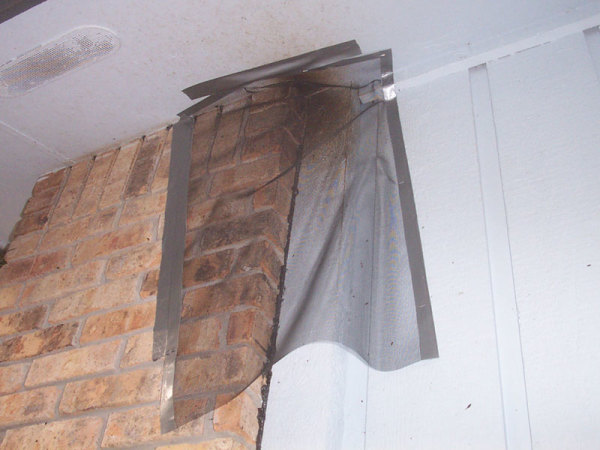
A Bat Exclusion in Action
To see bat exclusion in practice, I decided to accompany Brian Reichman, a licensed Pennsylvania wildlife control specialist, on one of his projects. Each state has a wildlife or conservation department that can offer advice on how to find a licensed wildlife removal specialist. (This is not an exterminator; bats’ endangered status makes it illegal for exterminators to touch them).
We met at the home of the late Clarence James in Hawley, Pennsylvania. Clarence was the township historian and local square dance caller who had recently died at the age of 103. His son, Don, recalled how the house was known to harbor bats for at least 50 years, but Clarence didn’t care. He had also not done any major repair work on the house for decades, so the colony had swelled to more than 400 little brown bats.
When I arrived at the property, beneath part of the cornice I could see an exclusionary device, a flap of nylon netting attached to the building over a bat entry point. Excluders should be attached securely along their top and three quarters of the way down their sides with duct tape or staples, allow the netting to hang somewhat loosely and extend about 2 feet below the bat access point.
Placed over a bat entry point, such devices act as a one-way door. The bats crawl down and out the bottom of the netting to fly away, but when they return they fly straight to the opening and can’t figure out how to get back in.
DIY Exclusion
Exclusionary devices are easy to make using nylon window screen with a mesh of 1/6 or smaller. Another option Barbara French recommends is to cover the openings with cleaned-out caulking tubes—ends cut off and pointed downwards. Bats can drop down and out through the tubes, but can’t climb back up the smooth surface. These excluders fit nicely into the curves on tile roofs.
In order to be effective, excluders must be placed over each bat entry point and left in place for at least a week, at which point the bats have given up trying to get back in, moving to a new home. Because the devices on Clarence James’ house had been up for more than a week, Brian was in the process of sealing all holes, cracks, and crevices with caulk or metal mesh to prevent their return. I asked him where the bats had gone. “Probably to the neighbors,” Brian shot back cheerfully. “Once a house bat, always a house bat!”
Cleaning Up the Guano
When the bats are gone, it’s time to clean up their mess. Bats have a keen sense of smell, and can sniff out the hint of a prior roosting spot from miles away, so all droppings must be carefully removed. Bat manure, or guano, while apparently an excellent fertilizer, can contain a fungus called Histoplasma capsulatum.
Proper precautions are necessary when cleaning guano. This crew wears suits and masks, and uses a HEPA vacuum.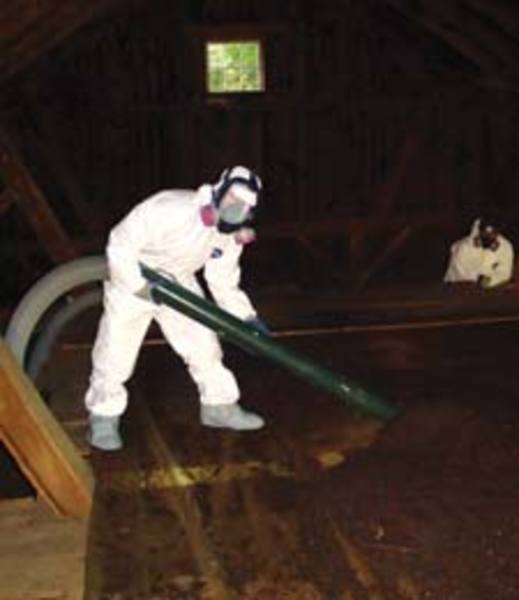
Inhaling the fungal spores can sometimes cause a respiratory infection in humans, so proper precautions are necessary for any cleanup. I donned some old clothes and a mask that Brian gave me with a filter capable of filtering out particles as small as 2 microns in diameter (the size of small fungal spores) and went upstairs. Heavy work gloves are also recommended.
The smell was overpowering, even through the mask. Belinda, Brian’s wife, assisted him and confessed, “The first time I did this, I told him, ‘I must really love you.”
Because this house had hundreds of bats living there for decades, it was a particularly big job that required a lot of cleanup. First Brian and Belinda tore off the dilapidated interior walls and ceiling, stained and smelling of bat urine, in order to expose the beams and supports. Then they vacuumed up the guano on the floor, walls, beams and even the ceiling-anywhere the bats had left their mark— using a professional HEPA utility vacuum. It’s a good idea to mist the guano with water first to help prevent the dust from getting into the air.
Finally, Brian sealed the windows, shut the door, sprayed the room with a commercial odor eliminator and antibacterial, and closed the room off for several hours until the spray dried. If you have a fairly small and accessible space, an alternative is to scrub all surfaces with a solution of 1 cup of bleach per gallon of water.
It’s important to clean diligently and make sure all openings have been sealed, because any remaining odor will tell bats the house is a great hotel, and they will move right back in. With the bats out, access points sealed, and the place scrubbed, Brian’s work was done and the problem solved.
Living With Bats
Not everyone blessed with bats decides to get rid of them. After all, bats are rarely dangerous-only about one half of one percent of all bats have rabies. Suppose you don’t hate bats; you just don’t want to share your house with them. In that case, before evicting them, you might consider putting up a bat house or two at some corner of your property. That way, when the bats are unable to get back into your house, they’ll have the bat house as an option. The bats will have their house, you’ll have yours, and you can be neighbors. Think of all the bugs they’ll eat!
Using Bat Boxes
One of the consequences of a successful bat eviction is that all those of displaced bats—the ones once sheltered in your rafters—will need a new place to live. Installing a bat box on your property makes it easy for them to find one.
Bat boxes installed on your property can lure the newly excluded–and evicted–bats to a new home. 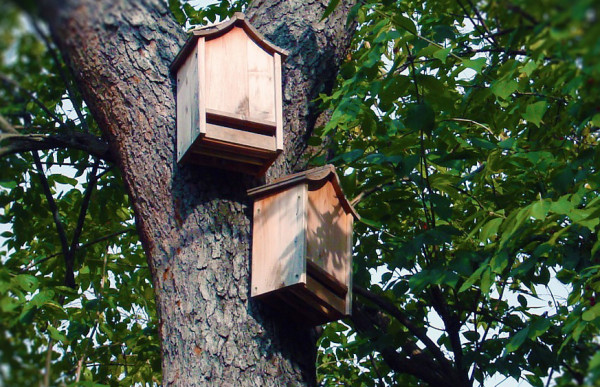
Bat boxes can come in many shapes and sizes, but all have one thing in common: They are designed to provide cozy quarters for a colony of bats. From the outside, a bat house often looks like a boxy birdhouse on steroids—with one difference, entrance holes are at the bottom. Nonetheless, they can be adorned with clever detailing—we even discovered a bat box with Folk Victorian styling.
Inside, all feature several crevices so bats can roost in layers. Installing a bat box in the corner of your yard gives newly excluded critters a place to go, while keeping them close enough to provide major insect control on your property. With a single bat chomping down about 3,000 bugs a night, that’s a lot of pest protection for your al fresco dining.







